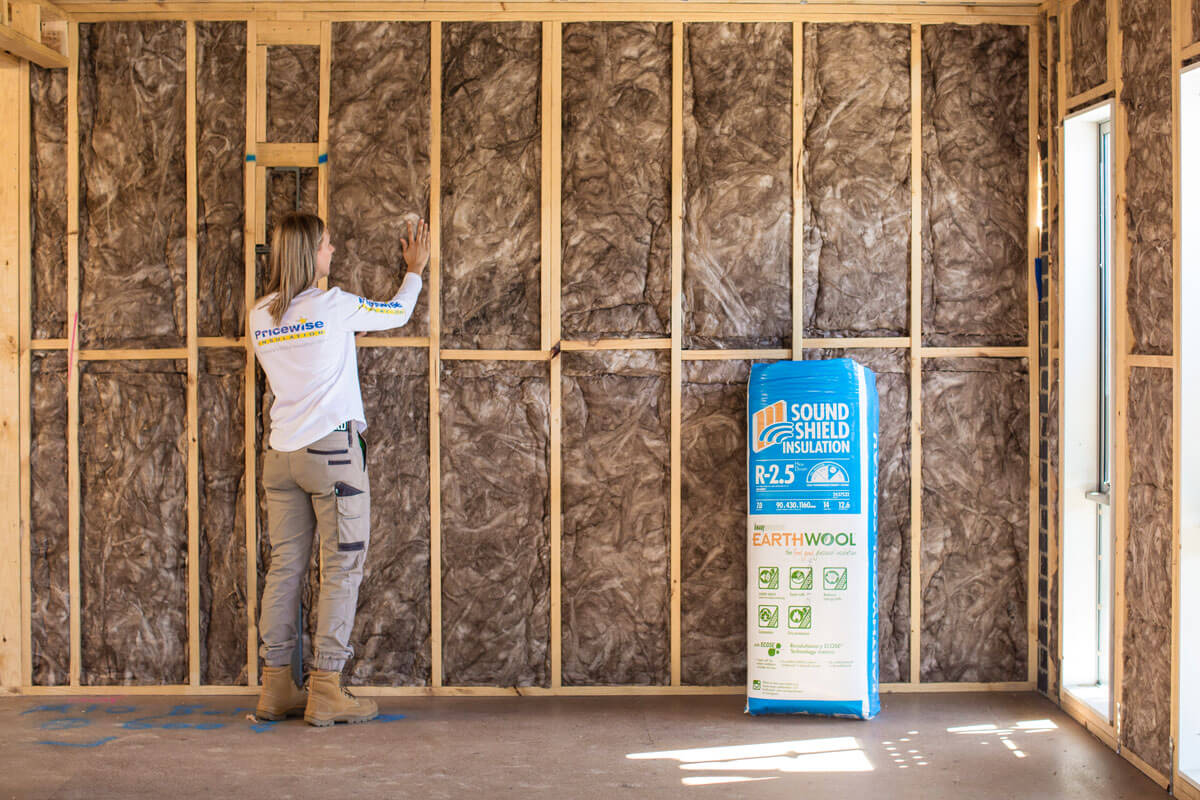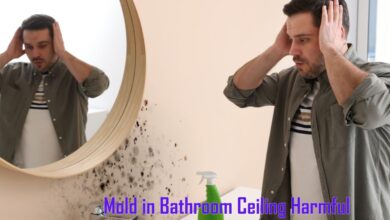Best Insulation for Interior Walls

The best insulation for interior walls depends on factors such as the type of wall, climate, and personal preferences. With options such as fiberglass, cellulose, and foam, each insulation material has its advantages and disadvantages.
We will explore these options to help you determine the most suitable insulation for your interior walls. Understanding the different insulation materials can contribute to a more energy-efficient and comfortable living environment. Whether you’re renovating or building a new home, choosing the right insulation for your walls can help reduce energy costs and create a quieter, more insulated space.
Follow along as we dive into the various insulation options available for interior walls.
Importance Of Proper Insulation For Interior Walls
Proper insulation is crucial for interior walls as it helps to regulate temperature, reduce noise transmission, and increase energy efficiency. Choosing the best insulation for your walls ensures optimal performance and a comfortable living environment.
Proper insulation for interior walls is essential for several reasons. By ensuring energy efficiency and reducing utility costs, enhancing comfort and maintaining a consistent temperature, and preventing outdoor noise infiltration, it plays a crucial role in creating a comfortable and energy-efficient living space.
Ensuring Energy Efficiency And Reducing Utility Costs:
- Insulating interior walls helps in creating a more energy-efficient home, resulting in reduced utility costs.
- Insulation acts as a barrier, minimizing the transfer of heat into or out of the house.
- It helps in maintaining a consistent indoor temperature, reducing the need for excessive heating or cooling.
- Effective insulation reduces heat loss during winters and heat gain during summers, optimizing energy consumption.
Enhancing Comfort And Maintaining Consistent Temperature:
- Proper insulation keeps the internal temperature of your home comfortable throughout the year.
- It prevents cold drafts from entering the living space, creating a more cozy and pleasant environment.
- Insulation also helps in balancing temperature fluctuations between rooms, ensuring a consistent and comfortable atmosphere.
- By reducing heat transfer, it prevents the walls from becoming cold or hot to the touch, adding to the overall comfort of your home.
Preventing Outdoor Noise Infiltration:
- Insulating interior walls acts as a sound barrier, minimizing the impact of outside noise.
- It helps in creating a peaceful and quiet living environment, especially in urban areas or near busy roads.
- Insulation materials such as fiberglass and cellulose absorb sound vibrations, reducing noise infiltration into your home.
- Proper insulation ensures that unwanted outdoor noises, such as traffic or neighborhood activities, are kept to a minimum, allowing for a more tranquil living space.
Investing in quality insulation for your interior walls not only enhances energy efficiency and reduces utility costs but also enhances comfort by maintaining a consistent temperature and preventing outdoor noise infiltration. So, make sure to choose the best insulation for your interior walls to create a comfortable and peaceful living environment.
Factors To Consider When Choosing Insulation Materials
Choosing the best insulation for interior walls requires careful consideration of factors such as R-value, material type, and installation method. It is important to choose a material that offers excellent thermal performance, soundproofing capabilities, and is environmentally-friendly.
The right insulation materials for your interior walls can make a significant difference in your home’s energy efficiency, comfort, and soundproofing. When selecting insulation, it’s important to consider several factors. Here are the key considerations to keep in mind:
Thermal Resistance (R-Value):
- R-value measures the insulation material’s ability to resist heat flow.
- Higher R-value indicates better insulation efficiency and heat retention.
- Choose insulation materials with appropriate R-values for your specific climate and desired energy efficiency.
Moisture Resistance:
- Insulation should have moisture resistance to prevent mold, mildew, and rot, which can damage the walls and compromise indoor air quality.
- Opt for moisture-resistant insulation materials such as closed-cell spray foam or extruded polystyrene foam.
- Ensure installation techniques provide effective vapor barriers to minimize moisture infiltration.
Fire Safety Rating:
- Promote fire safety by selecting insulation materials with good fire resistance.
- Look for materials with a high fire safety rating, such as mineral wool or fiberglass insulation with added fire retardants.
- Verify compliance with local building codes and regulations for fire safety requirements.
Soundproofing Capabilities:
- Insulation plays a crucial role in reducing noise transmission between rooms and from external sources.
- Consider materials specifically designed for soundproofing, such as acoustic batts, cellulose insulation, or sound-dampening boards.
- Installation and coverage are vital for optimal soundproofing performance.
Environmental Impact:
- Choose insulation materials with low environmental impact to minimize carbon footprint and support sustainability.
- Look for eco-friendly options like recycled cellulose, cotton batts, or natural mineral wool.
- Consider the manufacturing process, recyclability, and overall environmental attributes when making your selection.
Considering these factors will help you make an informed decision when choosing insulation materials for your interior walls. Always consult with professionals or follow local building codes to ensure the best results. Enhance your home’s energy efficiency, comfort, and soundproofing while minimizing the impact on the environment.
Types Of Insulation Materials For Interior Walls
Discover the best types of insulation materials for interior walls, providing effective temperature and sound control, moisture resistance, and energy efficiency. From fiberglass and cellulose to foam boards and spray foam, these options offer superior insulation to create a comfortable and sustainable living space.
When it comes to insulating your interior walls, there are several types of insulation materials to choose from. Each material has its own set of pros and cons, so it’s important to understand which one is most suitable for your needs.
Let’s take a closer look at the different types of insulation materials available:
Fiberglass Insulation:
- High R-value: Fiberglass insulation offers excellent thermal resistance, making it a highly efficient insulator.
- Affordable: Compared to other types of insulation materials, fiberglass insulation is relatively inexpensive.
- Easy to install: Fiberglass insulation comes in pre-cut batts or rolls, making it easy to handle and install.
However, there are a few drawbacks to consider:
- Skin irritation: Fiberglass insulation can cause skin irritation if not handled with care, so it’s important to wear protective clothing during installation.
- Fit for irregular spaces: Fiberglass insulation may not fit well in irregularly shaped spaces or areas with obstructions.
Cellulose Insulation:
- Made from recycled materials: Cellulose insulation is eco-friendly as it is made from recycled paper or cardboard.
- Good soundproofing: This type of insulation material is effective in reducing noise transmission between rooms.
- Resistant to pests: Cellulose insulation contains borate, which acts as a deterrent to insects and pests.
However, there are a couple of considerations:
- Professional installation: Cellulose insulation requires professional installation to ensure proper coverage and effective thermal performance.
- Potentially flammable: While treated with fire-retardant chemicals, cellulose insulation is still potentially flammable and must be protected from ignition sources.
Spray Foam Insulation:
- Excellent insulation: Spray foam insulation provides superior insulation by expanding and sealing gaps in walls, preventing air leakage.
- Effective in sealing gaps: Spray foam insulation can fill even the tiniest gaps and cracks, creating an airtight barrier.
- Moisture resistant: This insulation material repels water, reducing the risk of mold or moisture-related issues.
However, there are a few potential downsides:
- Expensive: Spray foam insulation can be more expensive compared to other insulation materials.
- Professional installation: Due to its specialized application process, spray foam insulation requires professional installation.
- May release toxins: Improper installation or curing can result in the release of harmful gases, so it’s crucial to follow proper installation guidelines.
Mineral Wool Insulation:
- Fire-resistant: Mineral wool insulation is non-combustible and can provide effective fire protection for your interior walls.
- Good soundproofing: This type of insulation material helps to reduce noise transmission between rooms.
- Chemically inert: Mineral wool insulation does not react or corrode with other materials.
However, there are a couple of considerations:
- Heavy and difficult to handle: Mineral wool insulation can be bulky and heavy, making it challenging to maneuver during installation.
- Protective clothing required: Due to its irritating properties, protective clothing should be worn during installation to prevent skin irritation.
Polyurethane Foam Boards:
- High R-value: Polyurethane foam boards offer excellent thermal resistance, ensuring effective insulation.
- Good moisture resistance: This type of insulation material repels moisture, reducing the risk of mold or mildew.
- Lightweight: Polyurethane foam boards are lightweight, making them easier to handle and install.
However, there are a few notable cons to consider:
- Expensive: Polyurethane foam boards can be costlier compared to other insulation materials.
- Potential for harmful gases: If not installed correctly, polyurethane foam boards can release harmful gases, highlighting the importance of proper installation methods.
The choice of insulation material for your interior walls depends on various factors such as budget, insulation requirements, and installation considerations. It’s essential to weigh the pros and cons of each option to make an informed decision that best suits your needs.
Installation Tips And Best Practices
Discover the best insulation for interior walls with our installation tips and best practices. Ensure optimal thermal performance and energy efficiency in your home while reducing noise transfer between rooms. Improve comfort and save on energy costs with the right insulation choice.
Inspecting Walls For Air Leaks
- Before installing insulation in interior walls, it is crucial to inspect the walls for any air leaks. This step ensures maximum effectiveness and energy efficiency.
- Check for cracks, gaps, and holes in the walls where air can escape or enter. Use a flashlight to thoroughly examine the wall surface.
- Look for areas around windows, doors, electrical outlets, and plumbing fixtures that may need sealing.
- Seal any gaps or cracks using caulk or weatherstripping. This helps prevent air leakage, enhancing the insulation’s performance.
Properly Preparing The Walls For Installation
- Adequate wall preparation is vital for a successful insulation installation.
- Clean the walls thoroughly to remove any dust, dirt, or debris. This ensures a proper bond between the insulation material and the wall surface.
- Repair any damaged or deteriorated areas on the walls before proceeding with insulation. Cracks and holes should be patched and sanded to create a smooth surface.
- Ensure that the walls are dry before installing insulation. Moisture can compromise the effectiveness of the insulation and lead to mold or mildew growth.
Following Manufacturer’S Instructions For Installation Techniques
- Each insulation material has specific installation techniques recommended by the manufacturer. It is important to follow these instructions to ensure optimal performance and safety.
- Read the manufacturer’s instructions carefully before starting the installation process.
- Pay attention to recommended tools, safety precautions, and specific steps for handling and installing the insulation material.
- Following the manufacturer’s instructions guarantees that the insulation will perform as intended and provides the best results for energy efficiency and comfort.
Ensuring Adequate Ventilation During Installation
- Proper ventilation is essential during insulation installation to maintain a healthy indoor environment and prevent moisture-related issues.
- Ensure there is sufficient airflow by opening windows or using fans to circulate fresh air.
- Use appropriate personal protective equipment, such as gloves and masks, to avoid inhaling insulation particles.
- If working in a confined space, consider using a portable ventilation system to remove airborne particles and maintain good air quality.
- Adequate ventilation helps minimize potential health risks associated with insulation materials and creates a safe working environment.
Remember, following these installation tips and best practices paves the way for effective insulation in interior walls. Properly inspecting for air leaks, preparing the walls, adhering to manufacturer’s instructions, and ensuring adequate ventilation are essential steps to optimize energy efficiency and create a comfortable living space.

Credit: pricewiseinsulation.com.au
Frequently Asked Questions For Best Insulation For Interior Walls
What Is The Best Insulation For Interior Walls?
The best insulation for interior walls depends on factors like budget, desired thermal performance, and noise reduction. Common options include fiberglass batts, cellulose insulation, and spray foam. Each has its advantages, so it’s crucial to consider your specific needs before making a decision.
How Does Fiberglass Insulation Work?
Fiberglass insulation works by trapping air within its fibers, creating pockets of insulation that reduce heat transfer. The glass fibers resist the flow of heat and keep the conditioned air inside your home. It’s a popular choice for insulation due to its affordability and effectiveness in reducing energy consumption.
Is Spray Foam Insulation Suitable For Interior Walls?
Yes, spray foam insulation is suitable for interior walls. It offers excellent thermal performance by creating an airtight seal, preventing air leaks and reducing energy loss. Additionally, spray foam insulation can also help with noise reduction, as it acts as a sound barrier within the walls.
However, professional installation is recommended.
Conclusion
Choosing the right insulation for your interior walls is essential for maintaining a comfortable and energy-efficient home. By considering factors such as R-value, soundproofing capabilities, and moisture resistance, you can make an informed decision that suits your specific needs. Fiberglass insulation, with its affordability and versatility, is a popular option that effectively traps air and reduces heat transfer.
On the other hand, spray foam insulation is highly efficient and can seamlessly fill gaps and crevices for maximum coverage. Meanwhile, cellulose insulation offers excellent soundproofing qualities and is made from recycled materials, making it an environmentally friendly choice. Ultimately, each type of insulation has its own advantages, so it’s important to weigh the pros and cons based on your priorities.
Consulting with a professional contractor can also provide valuable insights and ensure a successful insulation installation. Now that you are armed with this knowledge, you can confidently make the best choice for insulating your interior walls.











[…] within the walls of James L Hardaway House lies a captivating collection of artwork and decorative pieces that… to a whole new level of aesthetic brilliance. Each room serves as a gallery, paying homage to the […]